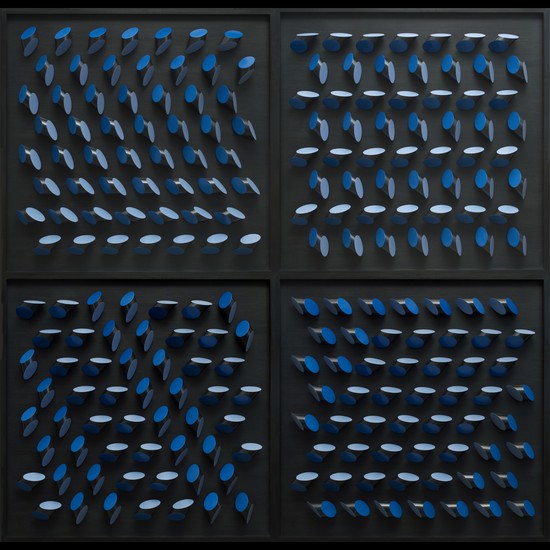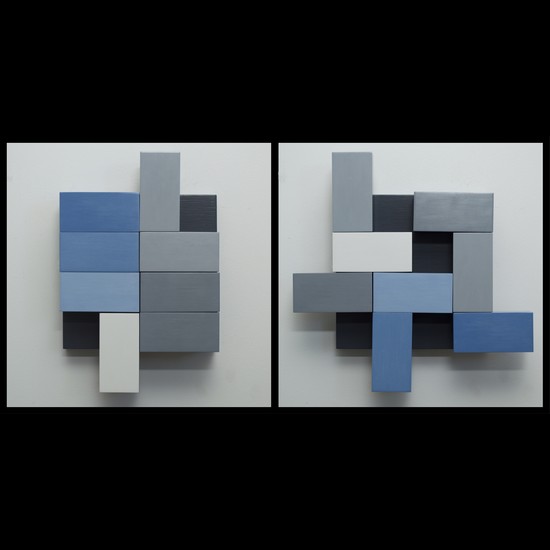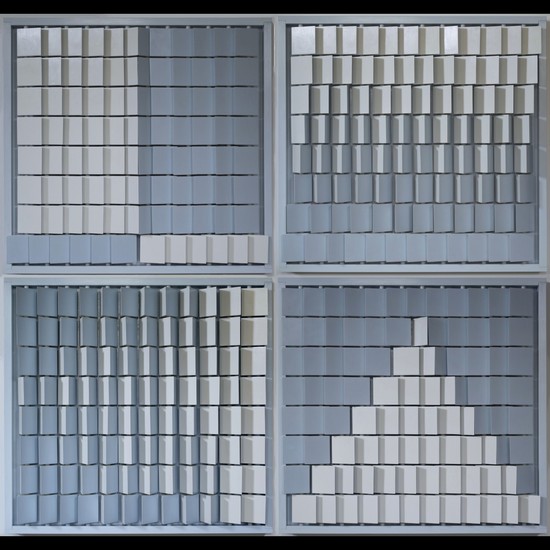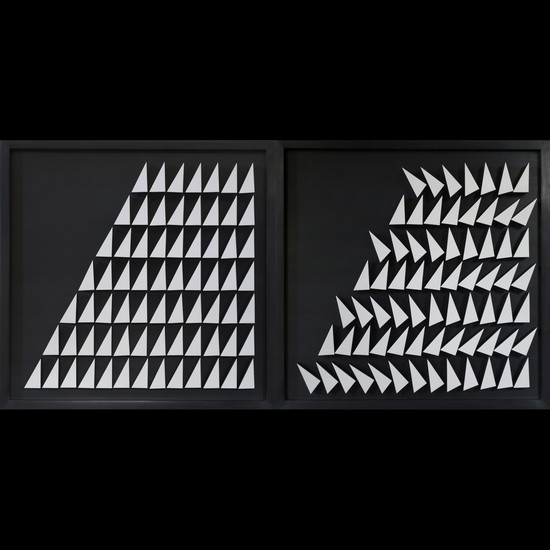Chris Rom
We are a husband and wife collaborative team and have worked together closely on every piece of art that we have created in the past twenty years. Through countless conversations with one another – both verbally and on paper – we begin with a concept and consider different visual formats in which to bring about its inception. From this idea stage to the actual construction and completion, we work side-by-side, defining our roles loosely as we are both capable and proficient in most aspects of fabrication. Frequently one person will execute a task on one piece, and then that same task will be performed by the other person on a subsequent piece. Currently some of the materials we are working in include wood and milk paint, stoneware and porcelain, hand-felted wool, recycled rubber, and metal. Though seemingly disparate, the application of these materials share a laconic and modest propensity towards the expression of our concepts and vision. Two predominant themes run through our work. The first we call minimalism in multitudes; the second is the capacity for the viewer to interact tactilely with the piece. Our concepts often involve creating collections of modest, coextensive forms – small modules that are perspicuously arranged in a grid-like fashion. Great consideration enters into the process of choosing color, angle, size, and proximity of the individual elements. When viewed independently the forms appear straightforward and uncomplicated, but it is the consequence of the enterprise that gives rise to the exponential impact that each work holds. Building upon this theme is the potential for haptic viewer interaction. The repeated elements in most of these constructions impart a variable of change through rotation or movement revealing the potential for shadowing, reflection, and the differential impact of light. Along with physical alternation, manipulation of vantage point is also significant when navigating the multifarious aspects of these pieces. The relationships that form between the components, the directional gravity that the collection possesses as a group, as well as other distinct optical effects then reveal themselves to the viewer. While these reductive constructions have an inclination towards quiet geometric simplicity, when each piece is manipulated and positioned, it can effectuate infinite complexities and unlimited possibilities.



